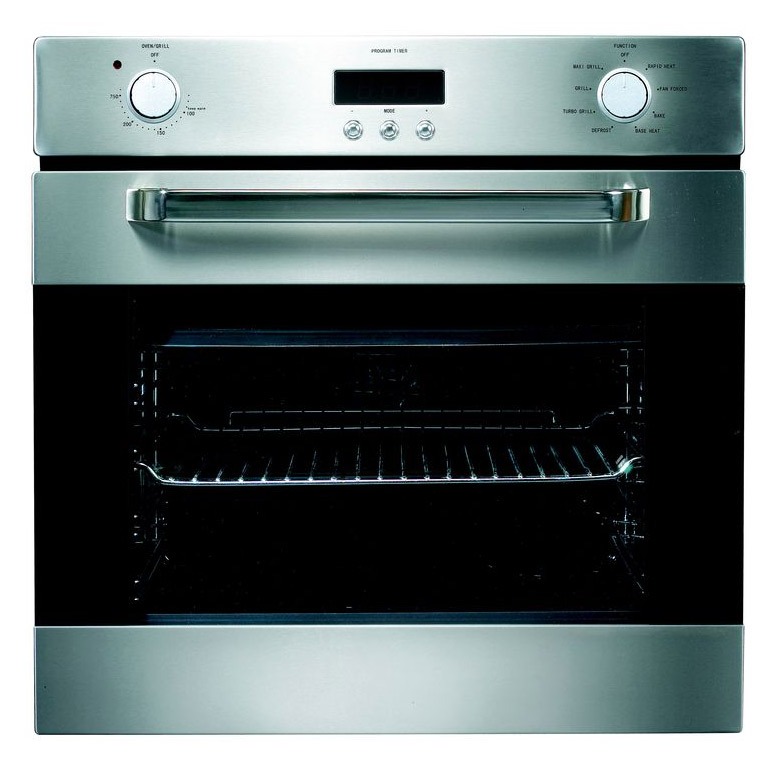Cooking
 http://en.wikipedia.org/wiki/File:Oven.agr.jpg
http://en.wikipedia.org/wiki/File:Oven.agr.jpg
Modern oven
In cooking, the conventional oven is a
kitchen appliance and is used for
roasting and heating. Food normally cooked in this manner includes
meat,
casseroles and baked goods such as
bread,
cake and other
desserts.
Modern ovens are fueled by
gas or
electricity. When an oven is contained in a complete stove, the fuel used for the oven may be the same as or different from the fuel used for the burners on top of the stove.
Ovens usually can use a variety of methods to cook. The most common may be to heat the oven from below. This is commonly used for baking and roasting. The oven may also be able to heat from the top to provide
broiling. In order to provide faster, more-even cooking,
convection ovens use a small fan to blow hot air around the cooking chamber. An oven may also provide an integrated
rotisserie.
Ovens also vary in the way that they are controlled. The simplest ovens (for example, the
AGA cooker) may not have any controls at all; the several ovens simply run continuously at various temperatures. More conventional ovens have a simple
thermostat which turns the oven on and off and selects the temperature at which it will operate. Set to the highest setting, this may also enable the broiler element. A
timer may allow the oven to be turned on and off automatically at pre-set times. More sophisticated ovens may have complex,
computer-based controls allowing a wide variety of operating modes and special features including the use of a
temperature probe to automatically shut the oven off when the food is completely cooked to the desired degree.
Some ovens provide various aids to cleaning.
Continuous cleaning ovens have the oven chamber coated with a
catalytic surface that helps break down (oxidize) food splatters and spills over time.
Self-cleaning ovens use
pyrolytic decomposition (extreme heat) to oxidize dirt. Steam ovens may provide a wet-soak cycle to loosen dirt, allowing easier manual removal. In the absence of any special methods, chemical
oven cleaners are sometimes used or just old-fashioned
scrubbing.
[edit] Industrial, scientific, and artisanal use
Outside the culinary world, ovens are used for a number of purposes.
- A furnace can be used either to provide heat to a building or used to melt substances such as glass or metal for further processing. A blast furnace is a particular type of furnace generally associated with metal smelting (particularly steel manufacture) using refined coke or similar hot-burning substance as a fuel, with air pumped in under pressure to increase the temperature of the fire.
- A kiln is a high-temperature oven used in wood drying, ceramics and cement manufacture to convert mineral feedstock (in the form of clay or calcium or aluminum rocks) into a glassier, more solid form. In the case of ceramic kilns, a shaped clay object is the final result, while cement kilns produce a substance called clinker that is crushed to make the final cement product. (Certain types of drying ovens used in food manufacture, especially those used in malting, are also referred to as kilns.)
- An autoclave is an oven-like device with features similar to a pressure cooker that allows the heating of aqueous solutions to higher temperatures than water's boiling point in order to sterilize the contents of the autoclave.
- Industrial ovens are similar to their culinary equivalents, and are used for a number of different applications that do not require the high temperatures of a kiln or furnace.







